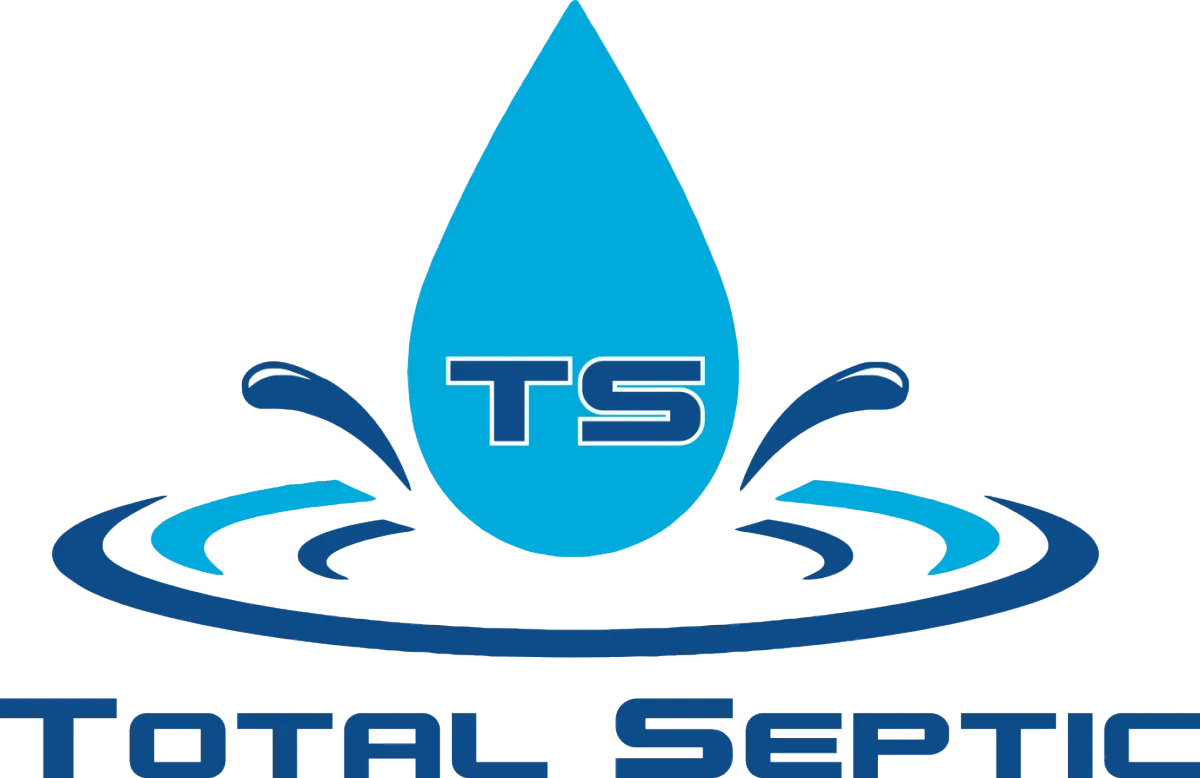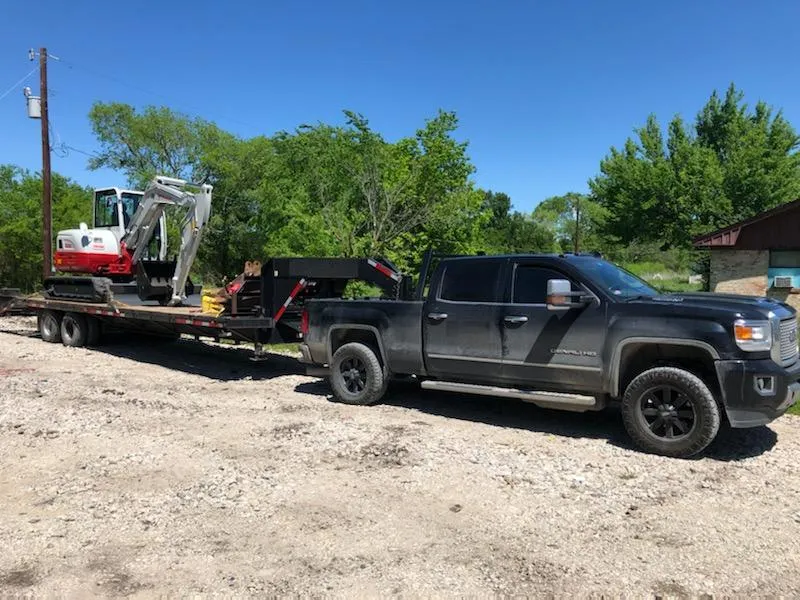
Serving Texas Counties: Collin, Grayson, Dallas, Denton, Rockwall, Fannin and Hunt
Septic Installation near Celina in Collin County, TX
Total Septic is Committed to superior quality and results!

AVOID COSTLY MISTAKES:
Do NOT hire an excavating contractor without first reading our free guide:
The ULTIMATE Excavation & Septic "Success Guide."

Septic Installation near Celina in Collin County: A Plain-English Homeowner Guide
A septic system is an on-site wastewater treatment solution that safely handles everything from sinks, showers, toilets, and laundry. Wastewater flows into a buried tank where heavier solids settle as sludge and lighter scum floats. Inside the tank, naturally occurring bacteria begin breaking down organic matter. Clarified effluent exits to the drain field, where native soils filter and treat it further before the water returns to the ground. When a system is properly sized to your household, matched to your soil, and installed to grade, it runs quietly in the background with minimal attention—no odors, no soggy yard, and no stress.
How Can We Help?


The practical benefits of doing the installation right the first time
Quality design and installation deliver benefits you notice daily. Reliability improves because trenches sit at consistent depths, connections are watertight, and distribution is balanced, preventing premature saturation and backups. Efficiency rises when gravity is used wherever possible, reducing pump runtime and future energy expense. Longevity increases with durable tanks, risers, and lids that simplify routine service and protect against groundwater infiltration. Yard preservation is better when access routes are planned and backfill is compacted in lifts. Most importantly, a correctly installed system protects local groundwater and keeps your property compliant with TX and county regulations.
Why hire a local Septic Installation near Celina in Collin County specialist
Local experience matters because underground conditions change quickly around Celina. One street may feature heavy clay, the next sandy loam, and each responds differently to rain and drought. A local specialist understands percolation rates, seasonal moisture, and the timing that preserves soil structure during excavation. They already know Collin County permitting requirements, submittal checklists, and inspection milestones, which reduces delays and rework. Coordination is smoother because they routinely work with utility locators, builders, and fence or pool contractors, so setbacks, elevations, and future plans fit together. In short, local knowledge lowers risk and keeps your project on schedule.
The process for hiring a Septic Installation near Celina in Collin County, Texas
The path is straightforward when you follow a proven sequence. First, a discovery call and site walk gather details on bedroom count, household size, water usage, expansion plans, and budget. Second, a soil evaluation confirms percolation and seasonal water levels, guiding system type and field layout. Third, a licensed design is prepared to TX and county standards, specifying tank size, treatment components, and the configuration of laterals or beds. Fourth, permitting submits drawings, specs, and product cut sheets to Collin County for review. Fifth, scheduling lines up materials, equipment access, and excavation dates with the weather. Sixth, installation sets the tank level, establishes correct inlet and outlet elevations, builds even distribution, and places inspection ports. Seventh, inspections verify code compliance. Finally, backfill, compaction, grading, and vegetation restoration protect the system and your lawn, followed by homeowner orientation on care and maintenance.
See Our Excavation & Septic Services

✔️ Commercial Excavation
✔️ Residential Excavation
✔️ Demolition
✔️ Dozer work
✔️ Septic inspections
✔️ Septic system pumping
✔️ Septic installs traditional systems
✔️ Septic tanks - aerobic systems
✔️ Septic tanks - Plastic/poly
Quality Services Launched FAST!

✔️ Septic tanks - Concrete
✔️ Sewer repairs
✔️ Trenching
✔️ Utilities Trenching
✔️ Pump Outs Installs
✔️ Maintenance Contracts
What Are You Waiting For?
System options that fit Celina, TX properties
Different sites call for different approaches. Traditional gravity systems are dependable where soils and slope allow steady drainage. Pressure dosing uses a pump to deliver uniform loading, improving performance on flatter areas or variable soils. Aerobic treatment units add oxygen to accelerate biological breakdown and produce high-quality effluent for flexible dispersal layouts. Chamber systems can reduce aggregate needs and speed installation on tight access sites. Drip dispersal threads tubing through landscaping to preserve trees and hardscape while delivering small, timed doses. Where groundwater sits high, shallow low-pressure beds or engineered media fields can protect treatment performance. The right choice balances upfront cost, operating simplicity, and long-term reliability for your specific lot in Celina.
Smart ownership habits that protect your investment
Simple routines keep any system healthy. Spread laundry over several days to avoid hydraulic surges. Keep wipes, grease, solvents, and paint out of drains so beneficial bacteria can work. Direct roof and surface water away from the field with gutters, downspout extensions, and positive grading. Mark tank and field locations and keep vehicles and heavy equipment off those areas to prevent compaction. Maintain grass cover to limit erosion and improve evapotranspiration. Schedule professional inspections as recommended for your system type and pump when solids reach target levels. Watch for early warning signs—wet spots over the field, gurgling fixtures, slow drains, or odors—and call for service before small issues become costly repairs.
Budget and timeline expectations in TX
Costs depend on soil conditions, system type, tank capacity, site access, and restoration goals. Rock excavation, tree preservation, retaining walls, and long material hauls can add time and labor. County fees are fixed, but weather can influence scheduling, especially after heavy rains that saturate soils. The best way to control cost is clarity: a complete design, a written scope with inclusions and exclusions, and a realistic restoration plan. Ask for a line-item proposal that identifies components, performance specs, and contingencies—for example, unsuitable soils, groundwater, or unexpected utilities. Clear documentation and realistic allowances make timelines predictable and keep budgets on track.
Documentation that supports resale value in Collin County
Good records make ownership easier and future transactions smoother. Keep permits, inspection approvals, component specifications, and as-built drawings together. Install accessible, labeled risers and take photos before backfill to show locations. Maintain logs for inspections and pumping, and file receipts where you can reach them quickly. Share basic care guidelines with family members and guests so good habits stick. A clean, code-compliant installation by a qualified provider of Septic Installation near Celina in Collin County, Texas reassures buyers and appraisers, reduces negotiation friction, and protects the long-term value of your TX property.
Facebook
Google Plus